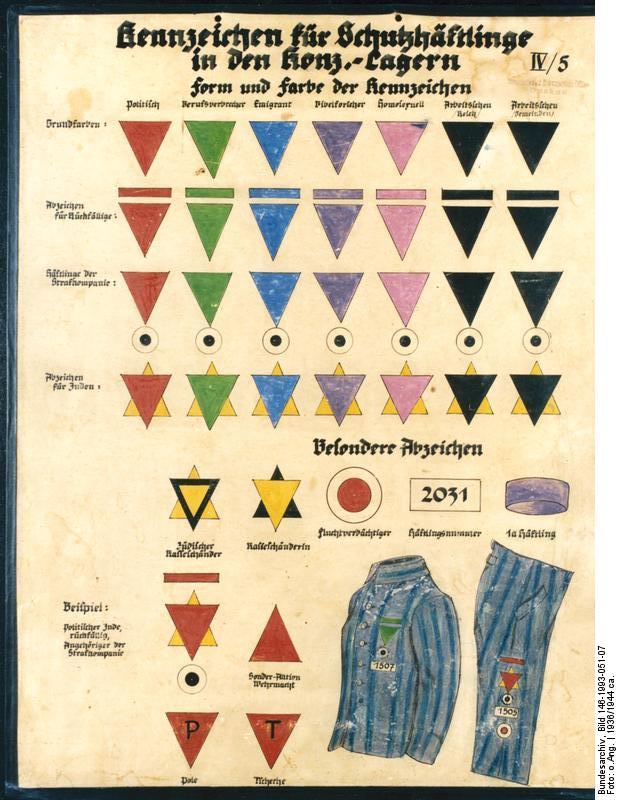Abstract
In 1935-36, individual commanders of various concentration camps
began forcing newly admitted groups of prisoners to wear badges
indicating the alleged grounds for their incarceration. Starting in the
winter of 1937-38, these classification
symbols were standardized for all camps. Additionally, colors were
introduced to differentiate different prisoner groups: red for political
prisoners, green for criminals, blue for emigrants, purple for Jehovah’s
Witnesses, pink for homosexuals, and black for “asocials”
[Asoziale] or “work shirkers”
[Arbeitsscheue]. Inmates wore
triangles of fabric in the assigned color on their prison uniforms (left
side of the shirt, right pant leg) along with their number and any
required additional markings (e.g., potential escapee). Jewish prisoners
also wore a yellow triangle that formed a Star of David when placed over
the other badge (see below). The origin of non-German prisoners was
indicated by the first letter of the German name of their native country
(e.g., “P” for Polen [Poland] or “T”
for Tschechoslowakei
[Czechoslovakia], as shown in the photo,). The cynical social Darwinist
classification and hierarchical ranking of the prisoners by the SS
intensified the competition among prisoners in the daily struggle for
survival.
